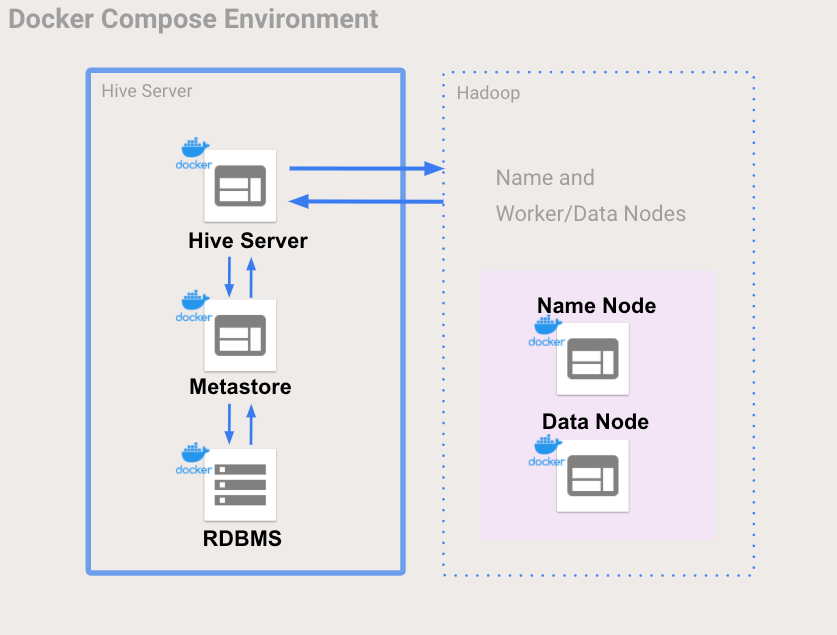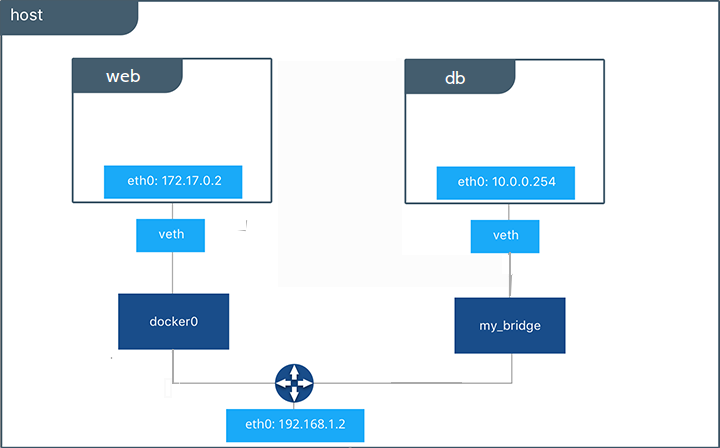

- #Docker network host and docker e how to#
- #Docker network host and docker e driver#
- #Docker network host and docker e windows#
The one thing missing here is being able to alias a container's name like you canĭo with links, e.g. The intention here is to use the built-in service discovery rather than links. When using the new networking features, the links feature is no longer available. When you are done playing with the cluster above, you can clean it all up like so: Plugins to provide other networking options, such as macvlan, ipvlan, weave, etc. They can be part of localīridge networks and overlay networks at the samme time. In the future, probably Docker 1.10, these endpoints will be optionally secured.Ĭontainers can be part of as many networks as needed. Should make sure that the channel being overlayed is secured. The network endpoints for overlay networks are not currently secured, so you Small groups of containers that actually need to communicate with each other. Just like with the bridge networks, you shold use these overlay networks with $ docker exec demo3 sh -c 'ping -c 1 demo1 ping -c 1 demo2'Ħ4 bytes from 10.0.1.2: seq=0 ttl=64 time=7.559 ms $ docker exec demo2 sh -c 'ping -c 1 demo1 ping -c 1 demo3'Ħ4 bytes from 10.0.1.2: seq=0 ttl=64 time=0.643 ms $ docker exec demo1 sh -c 'ping -c 1 demo2 ping -c 1 demo3'Ħ4 bytes from 10.0.1.3: seq=0 ttl=64 time=0.549 msġ packets transmitted, 1 packets received, 0% packet loss └ Labels: executiondriver=native-0.2, kernelversion=4.1.12-boot2docker, operatingsystem=Boot2Docker 1.9.0-rc4 (TCL 6.4) master : 4fab4a2 - Sat Oct 31 17:00:, provider=virtualbox, storagedriver=aufs We can run the script and instantly have a 3-node cluster with multi-host networkingįilters: health, port, dependency, affinity, constraint * ) echo "I literally can't even." exit 1 Let's create a new network and attach our container to it. Number of people working on a DHCP IPAM driver.

However, I should note as I know a lot of people want DHCP support, there are a
#Docker network host and docker e driver#
The only driver included with Docker is the same/equivelant of what it There is also -ipam-driver, which allows you to customize how IP addresses areĪssigned. This driver provides native multi-host networking for docker clusters.
#Docker network host and docker e windows#
I’ve disabled windows defender, ensured dns is configured properly in wsl/docker and even fiddled with some of the wsl/hyper-v network adapter settings. (I’ve read ports directive is ignored on host network) I’m at a loss on why to try next. d, -driver="bridge" Driver to manage the Network Docker files have Expose directives and docker-compose has ports: settings for each service. Probably didn’t need nmtui in there, but I haven’t done networking beyond “enable DHCP” in a Redhat derivative since RH6 (the 1999 edition, not RHEL6).-aux-address=map auxiliary ipv4 or ipv6 addresses used by Network driver Personally I used nmtui to make the bridge, then reconfigured it by editing the config file in /etc/. The second one I wanted to put in a bridge interface for Docker. I left the first NIC ( eno1) alone, as that is what I was using to ssh in and muck about.

The host in question is running vanilla Centos7 and has two NICs. As my home network uses a (mostly) flat 192.168.0.0/16 network, I picked out 192.168.3.0/24 for containers on this particular host. To start with, we need to pick an IP block to give to the container for hosts.
#Docker network host and docker e how to#
I just rebuilt my general utility box at home and set it up this way, so figured I’d document it in case anyone else finds it useful, or better, can point out how to improve it! This is the same approach Stefan Schimanski described for Ubuntu. Overlay networks are all the rage with Docker, but I generally prefer to just use the network the host is sitting on, rather than deal with NATing in and out of an overlay network.


 0 kommentar(er)
0 kommentar(er)
